

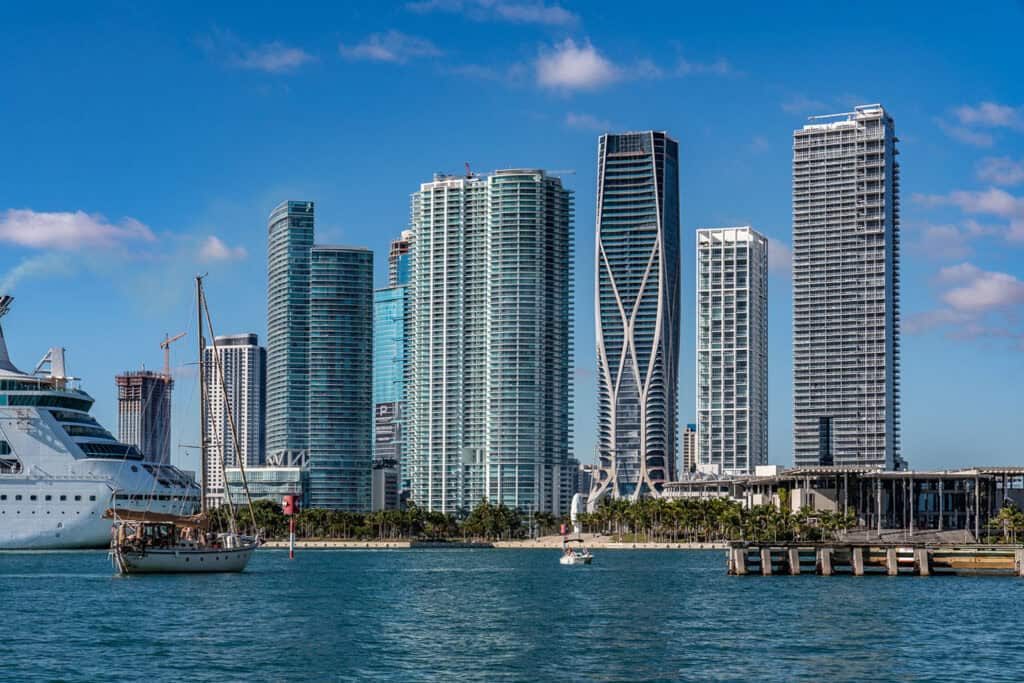
Curious about what makes Miami’s architecture so unique? The city boasts a rich tapestry of styles, each reflecting its vibrant culture.
As a resident or visitor, you’re not alone in wanting to explore these architectural marvels. The Best Cities for Architecture in the USA offer a stunning array of styles and historical significance that attract architecture enthusiasts from all over.
At Landmarks Architects, we celebrate Miami’s diverse designs and offer insights into its rich history.
In this article, we’ll explore:
- Neoclassical beauty
- Mediterranean Revival elegance
- Vibrant Art Deco
- Innovative Miami Modern (MiMo)
- Minimalist International Style
- Contemporary creativity
Ready to discover Miami’s architectural gems? Join us as we explore how these styles shape the city and inspire your vision.
These designs will deepen your appreciation for Miami’s character. They will also inspire your own space.
1. Neoclassical Architecture
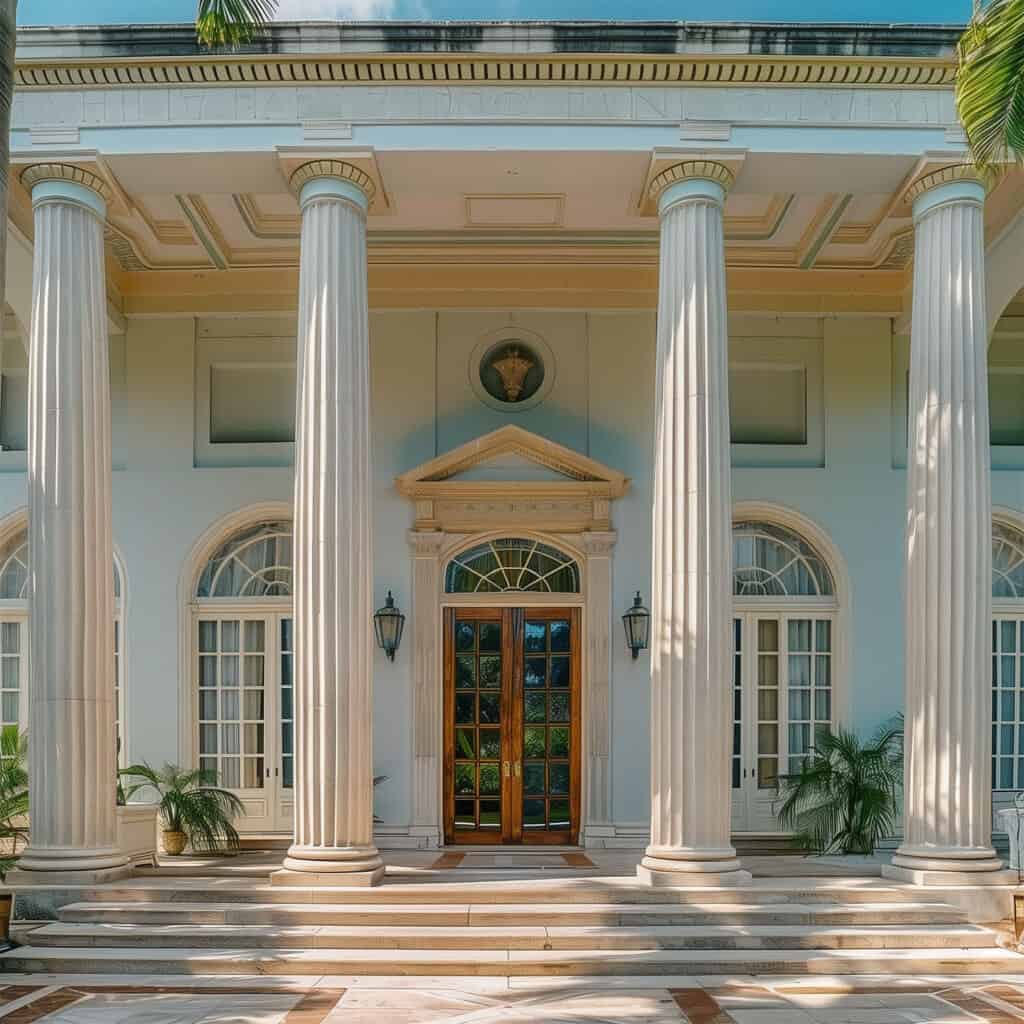
Neoclassical architecture in Miami is known for its grandeur and symmetry. This style draws inspiration from ancient Greek and Roman designs, characterized by specific elements, showcasing the diverse Types of Architectural Styles that can be found throughout the city.
Key features include:
- Columns: Often in the Ionic or Corinthian orders.
- Full-height porches: These add a stately appearance.
- Lintels over openings: Unlike Roman designs which use arches.
- Symmetry: Balanced proportions in buildings.

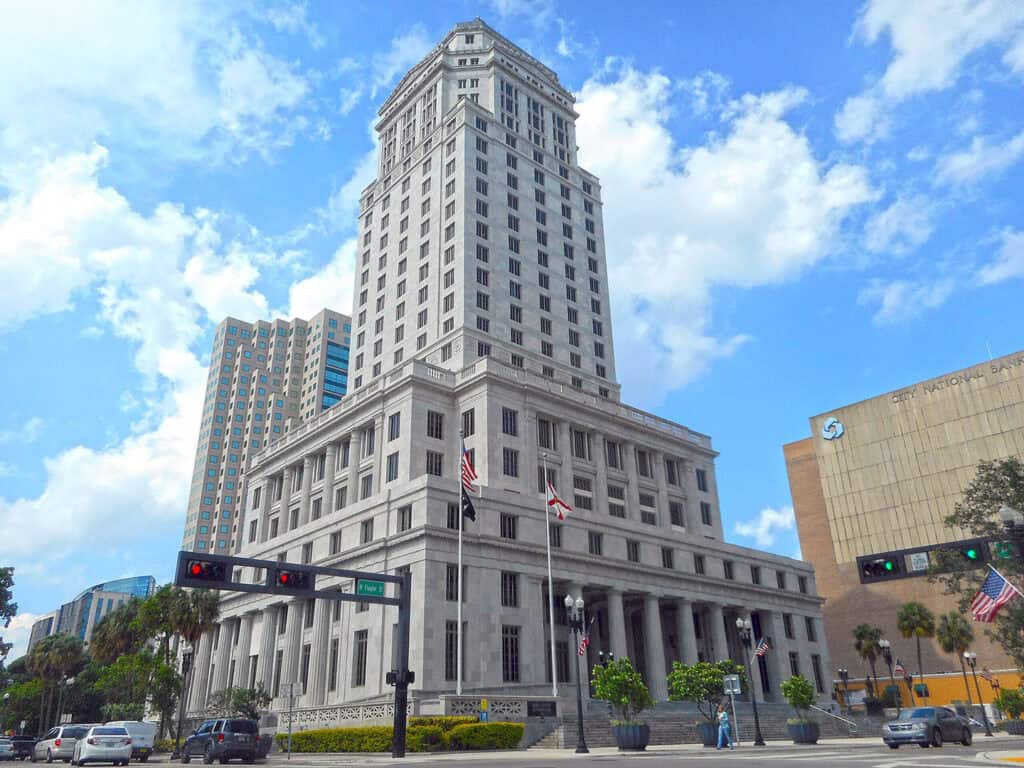
Two notable examples of Neoclassical architecture in Miami are:
- J. W. Warner House: Built in 1911, this elegant home has classical columns, a grand portico, and a symmetrical design. It shows the timeless appeal of Neoclassical architecture.
- Dade County Courthouse: Completed in 1928, this historic building has a tall, grand, classical design. They reflect the beauty of Neoclassical design.
Miami’s neoclassical architecture evokes grandeur and formality. It reflects the city’s historical aspirations and cultural influences. Its monumental structures contrast with the vibrant Art Deco and Mediterranean Revival styles. They enhance the city’s diverse architecture.
See Also Los Angeles Architectural Styles: Top 12 Iconic Features
2. Mediterranean Revival
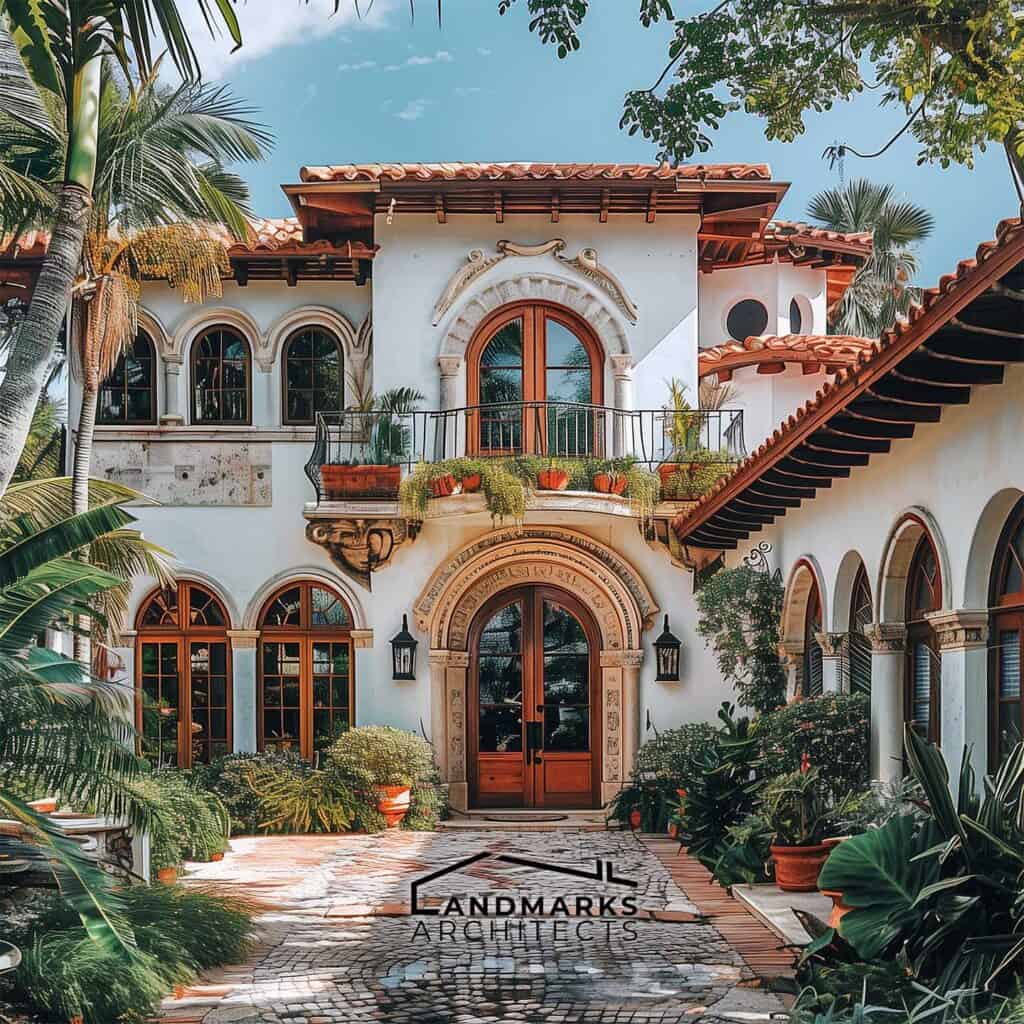
Mediterranean Revival is a key architectural style in Miami. It blends the Spanish Renaissance, Spanish Colonial, Italian Renaissance, and French Colonial styles, along with elements from the Mediterranean coast. This style gained prominence during the Florida land boom of the 1920s.
Key features of the Mediterranean Revival in Miami include:
- Low-Pitched Roofs: Typically covered with terracotta or red tiles.
- Arched Windows and Doorways: Characterized by rounded arches.
- Textured Stucco Walls: Often in light colors like white or pink.
- Wrought-Iron Details: Decorative grills and railings.
- Balconies and Courtyards: Integrated outdoor spaces for leisure.
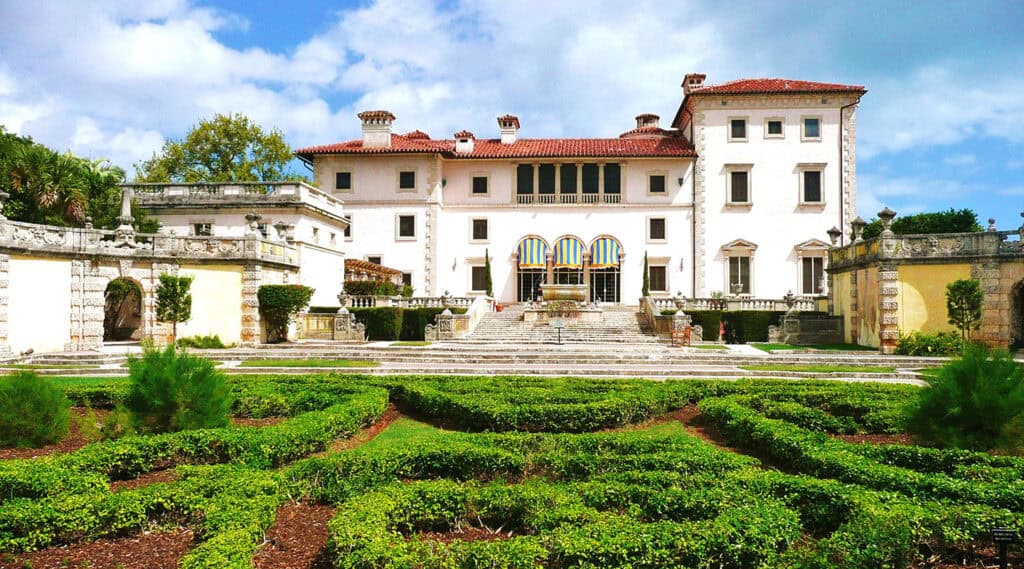
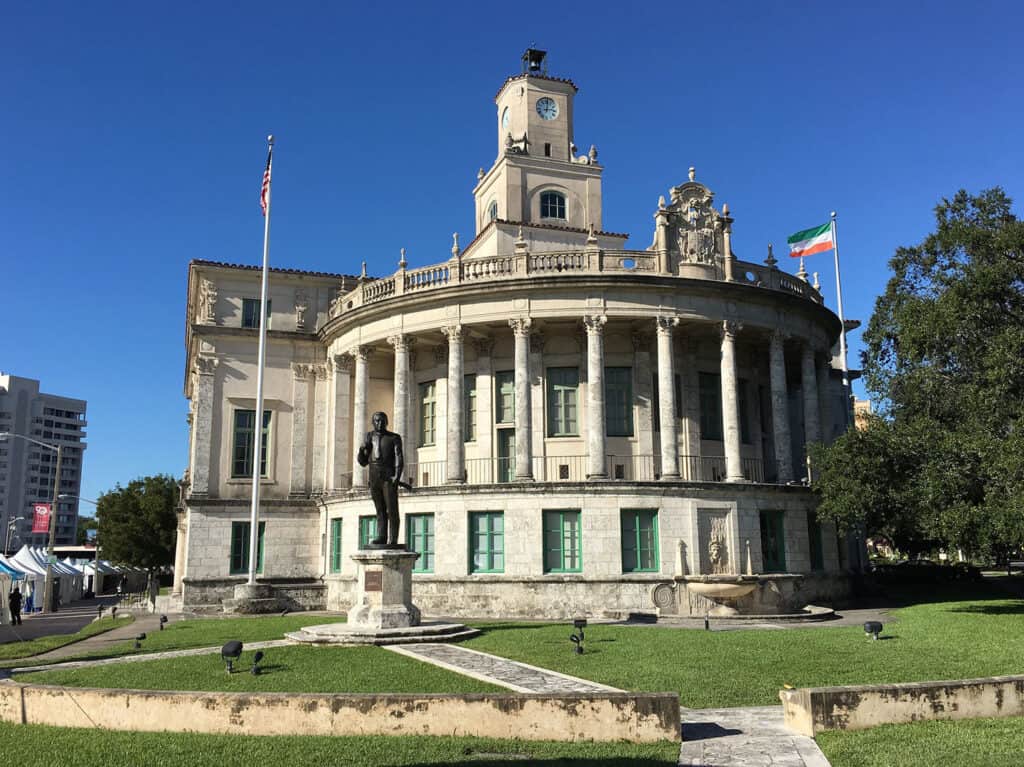
Two notable examples of Mediterranean Revival architecture in Miami are:
- Vizcaya Museum and Gardens shows Mediterranean Revival architecture. It has red-tiled roofs, stucco walls, and elegant gardens. Its design blends Italian Renaissance and Spanish styles.
- Coral Gables City Hall, built in 1928, has a Mediterranean Revival design. It has pink stucco, a red-tiled roof, and arched windows. Its historic charm is evident.
- The Freedom Tower in Miami is Mediterranean Revival architecture, featuring a stucco exterior, arched windows, a red tile roof, and intricate decorative details, reflecting its Spanish Renaissance influences.
The Mediterranean Revival style shows Miami’s cultural heritage. It links the city’s past to its modern identity in Miami architecture.
3. Art Deco
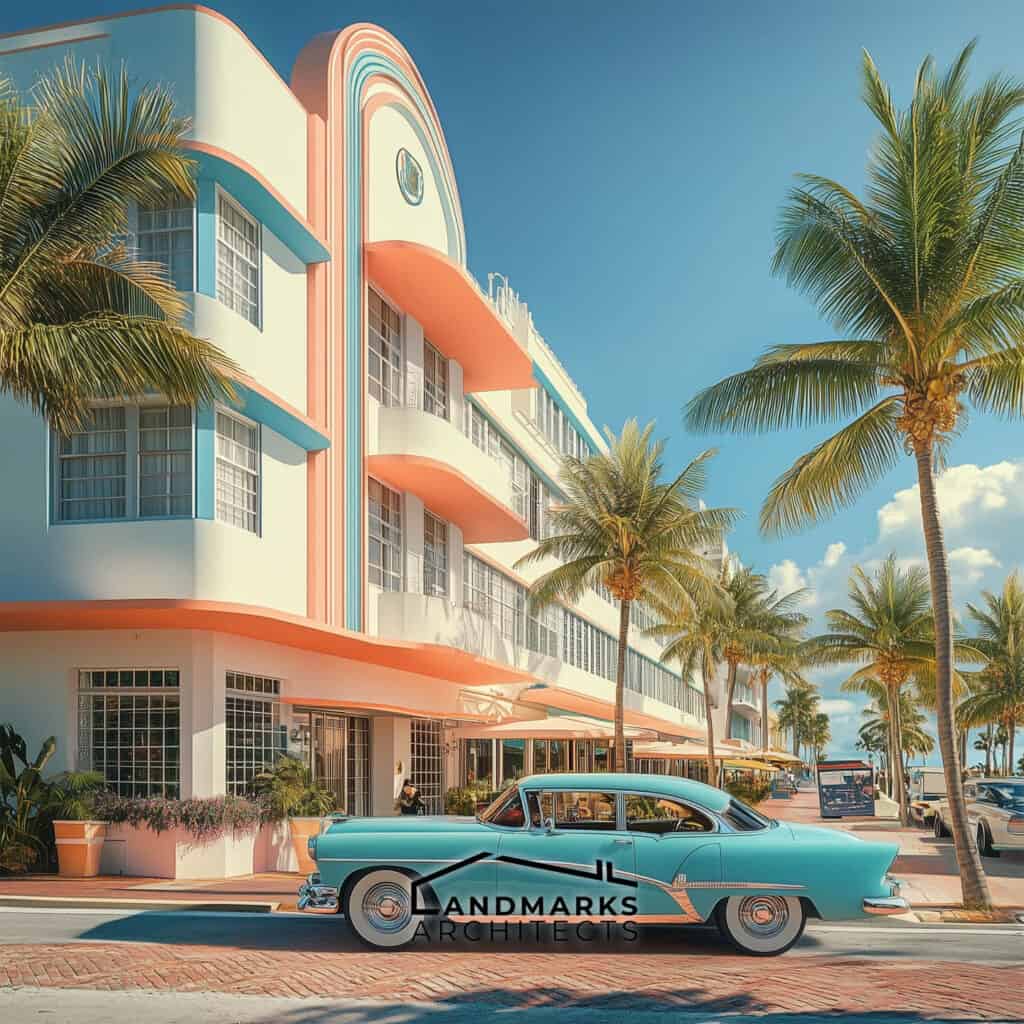
Art Deco, which gained prominence in the 1920s and 1930s, is characterized by vibrant colors and geometric shapes. It beautifully combines the sleek forms of Streamline Moderne with lush Tropical Deco motifs, incorporating elements like palm leaves.
This fusion creates visually striking architecture with bold mosaics and smooth, curved surfaces, harmonizing opulence with modern elegance. The Miami Art Deco District boasts the largest collection of Art Deco buildings in the world.
Key features of Art Deco in Miami include:
- Bold Colors: Vibrant pastels and bright hues on facades.
- Geometric Patterns: Use of zigzags, chevrons, and symmetrical designs.
- Ornate Detailing: Decorative floral motifs and intricate moldings.
- Curved Shapes: Smooth, rounded corners and streamlined forms.
- Tropical Elements: Themes like palm trees and oceanic motifs reflect the coastal environment.
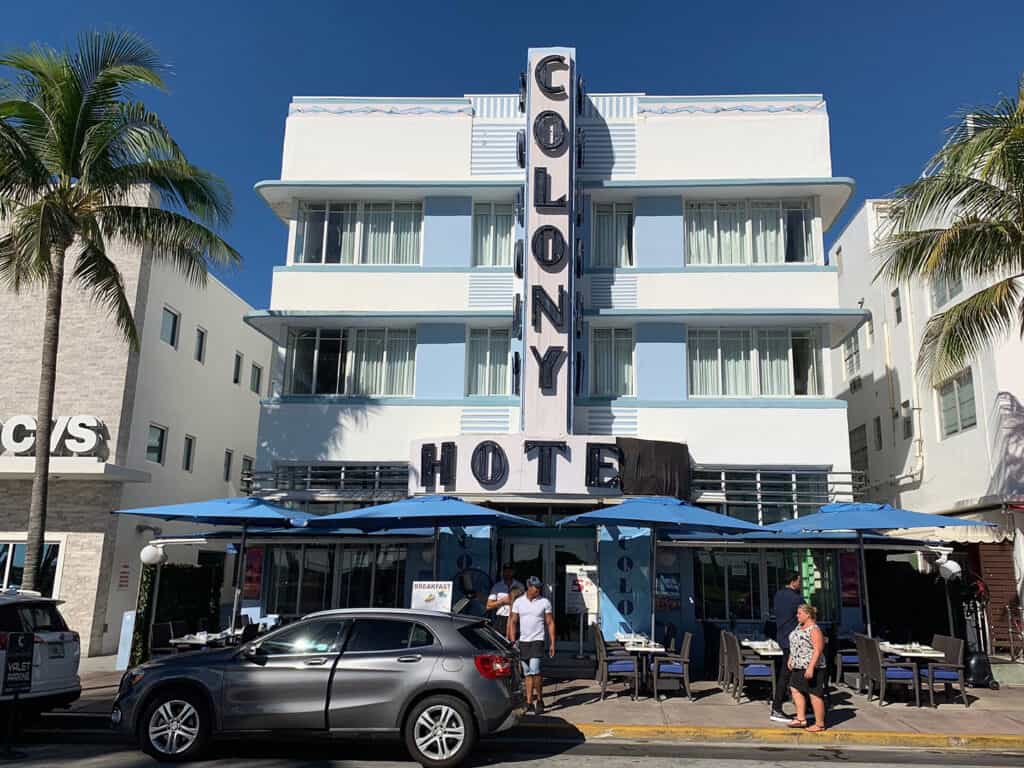
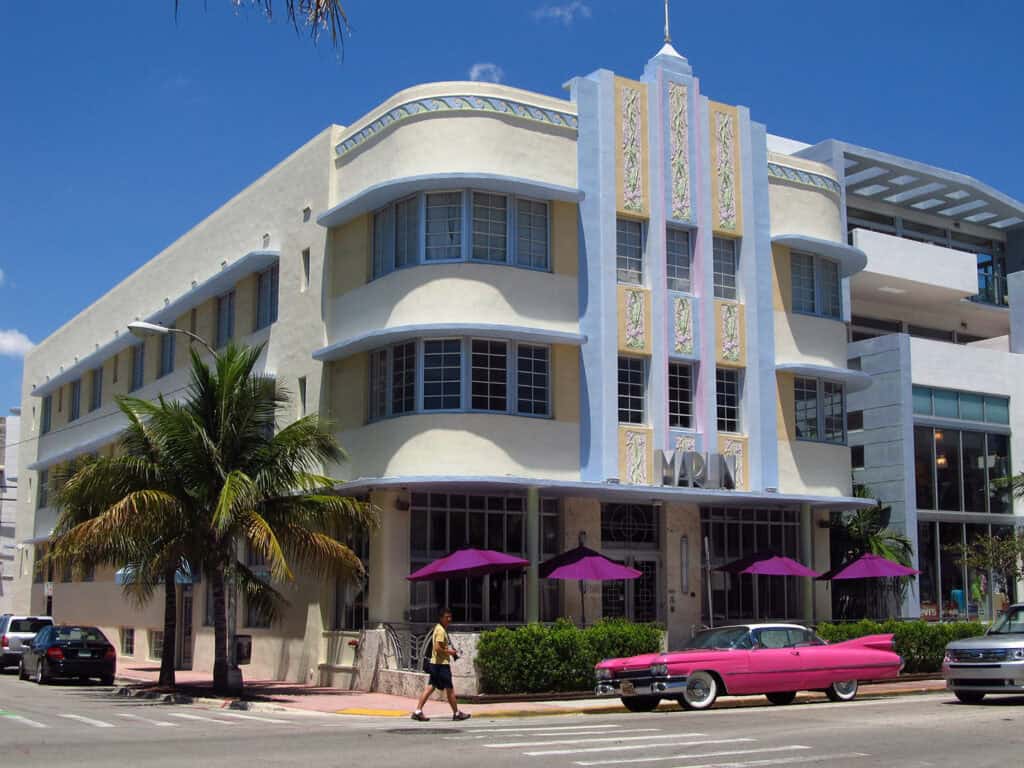
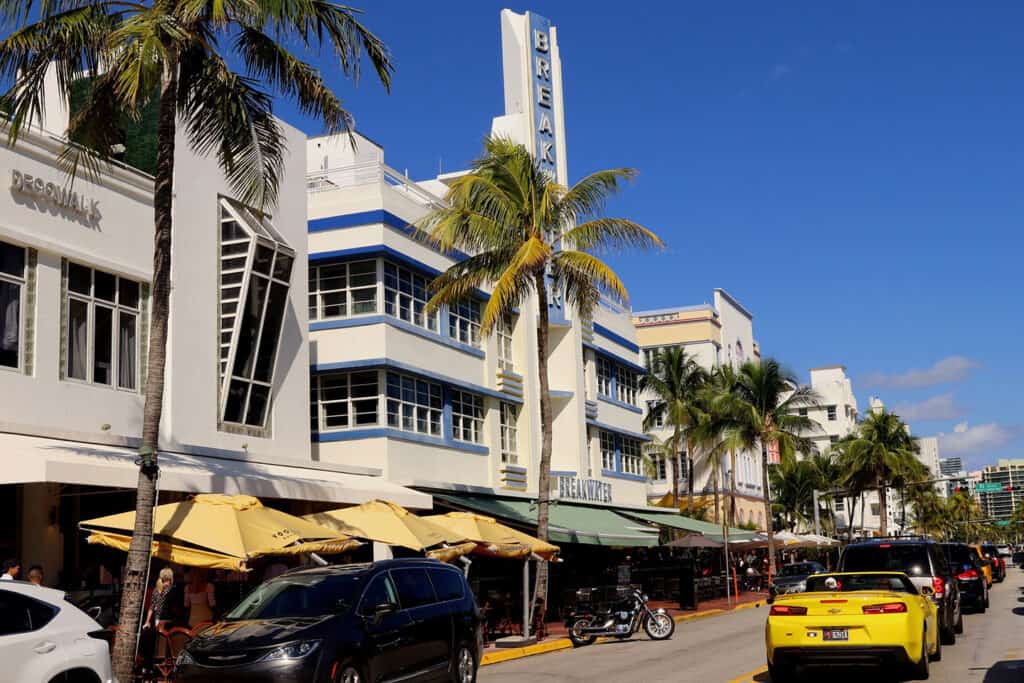
Notable examples of Art Deco buildings in Miami are:
- The Colony Hotel on Ocean Drive is famous for its pastel façade and neon signs. It is a prime example of Art Deco architecture, with its bold colors and geometric design.
- The Miami Beach Architectural District is famous for its Art Deco architecture. It features pastel colors and geometric shapes. It also has Tropical Deco, which uses bright colors and tropical motifs. This style suits the warm climate. Together, they create a unique blend of architecture.
Art Deco continues to attract tourists with its colorful buildings and unique designs. Today, it adds a lively, retro feel to Miami, celebrating the city’s fun and vibrant culture.
4. Miami Modern (MiMo)
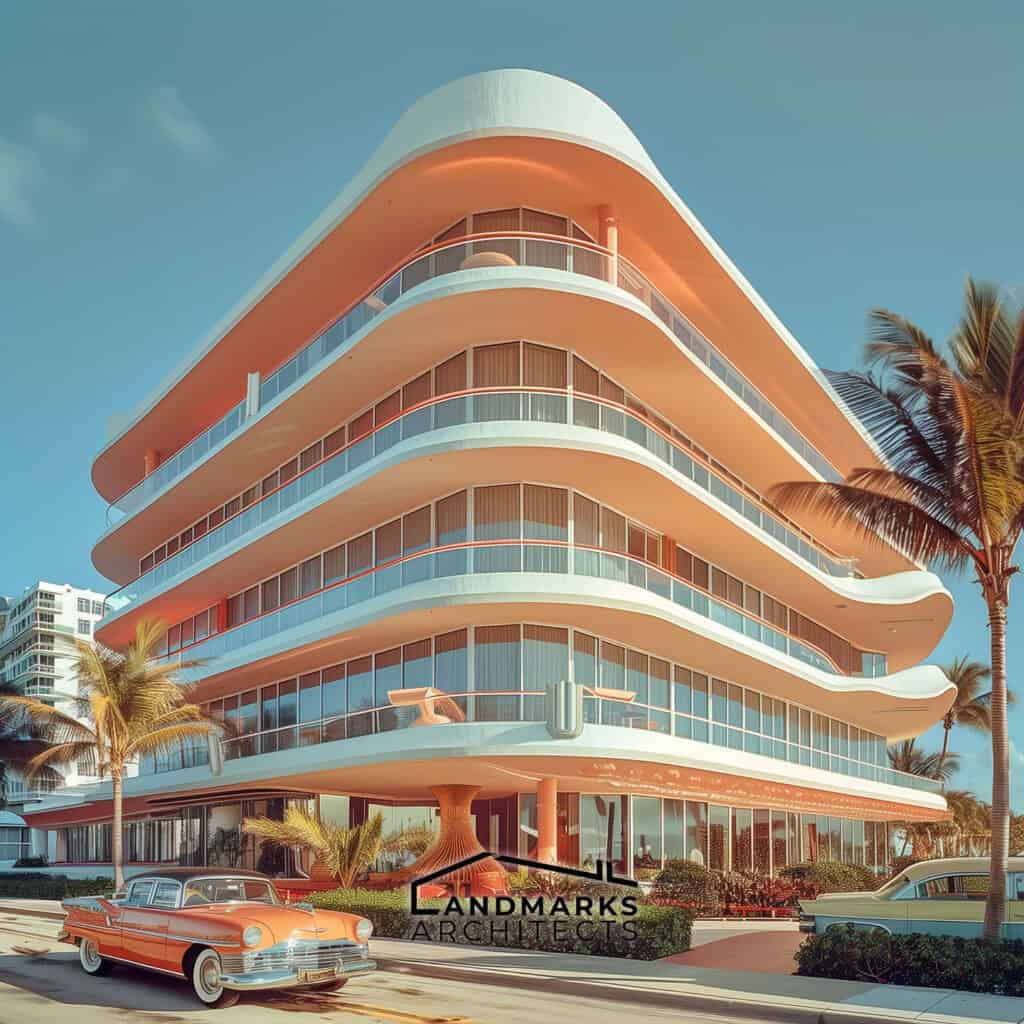
Miami Modern, or MiMo, developed in South Florida after World War II. This architectural style reflects a unique blend of tropical influences and modern aesthetics, distinguishing itself from the popular Art Deco style of the time and representing one of the key Modern Architectural Styles that emerged in the mid-20th century.
Key features of Miami Modern include:
- Geometric patterns with bold colors
- Flat roofs and rounded corners
- Use of natural materials like stucco and glass
- Hanging gardens and breezy corridors
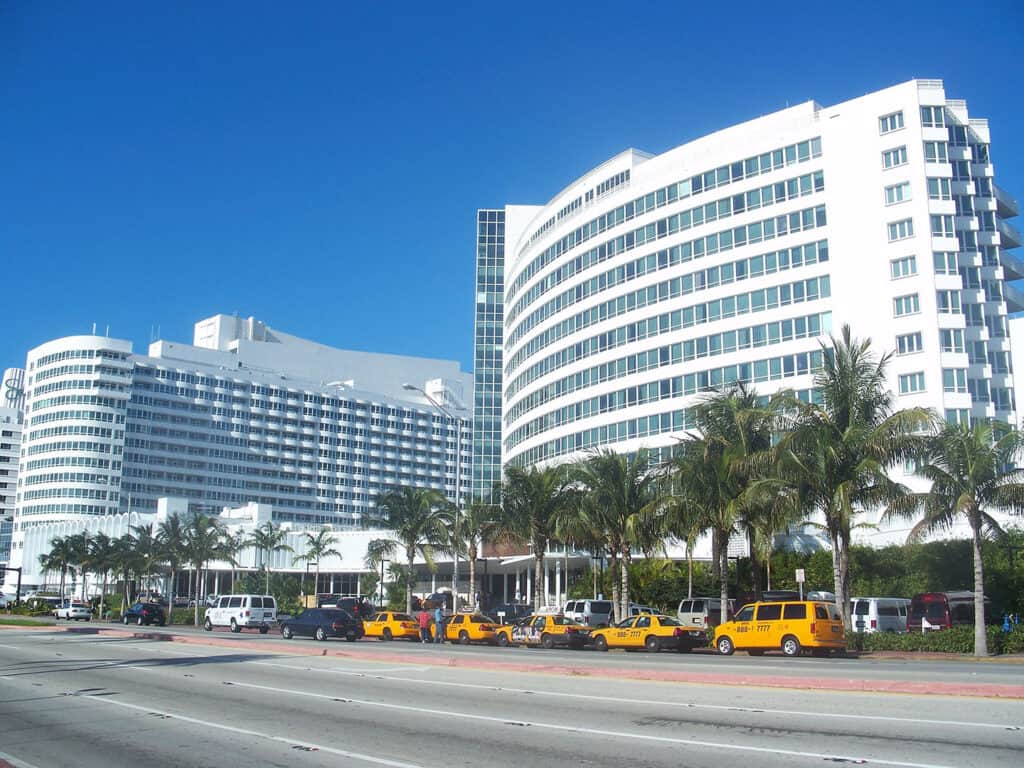
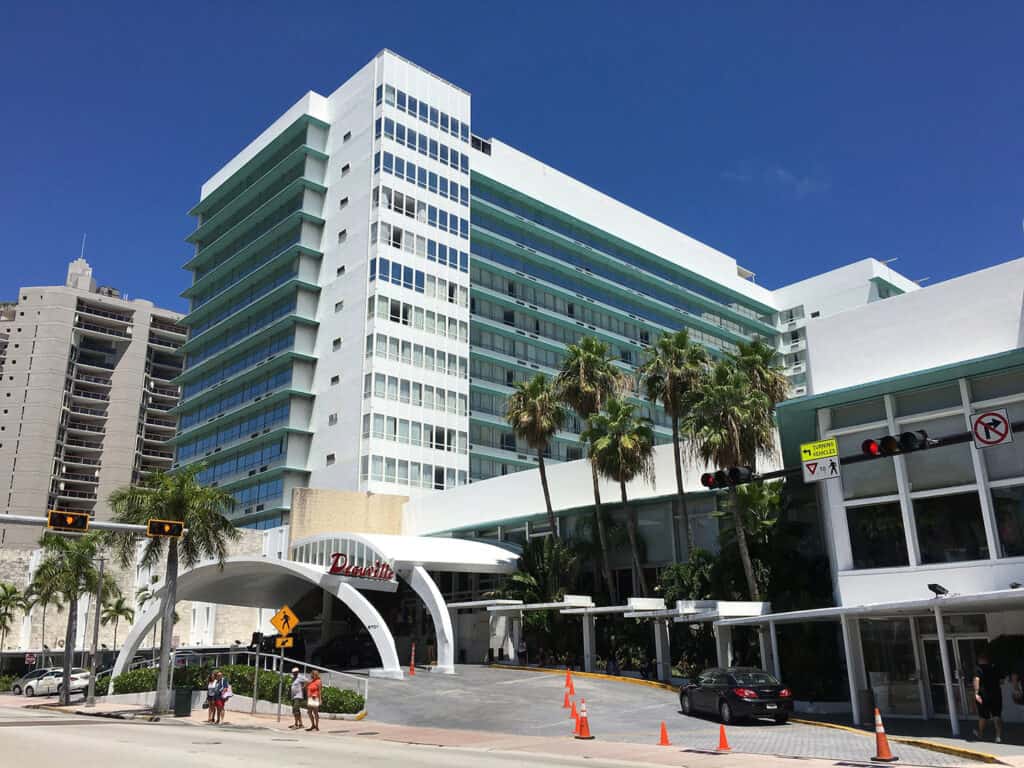
Notable examples of MiMo architecture in Miami are:
- Fontainebleau Miami Beach: This iconic hotel is on Miami Beach. It is a famous example of MiMo architecture, designed by Morris Lapidus. It is known for its dramatic curves and futuristic design.
- The Deauville Beach Resort: A famous MiMo hotel on Miami Beach. It has sleek lines, neon accents, and a glamorous, mid-century style.
These structures showcase the charm and creativity of this architectural style. They add to Miami’s rich cultural landscape. Enthusiasts and groups, like the Miami Design Preservation League, celebrate Miami Modern architecture.
See Also What is Modernist Style in Architecture? 10 Key Features
5. International Style
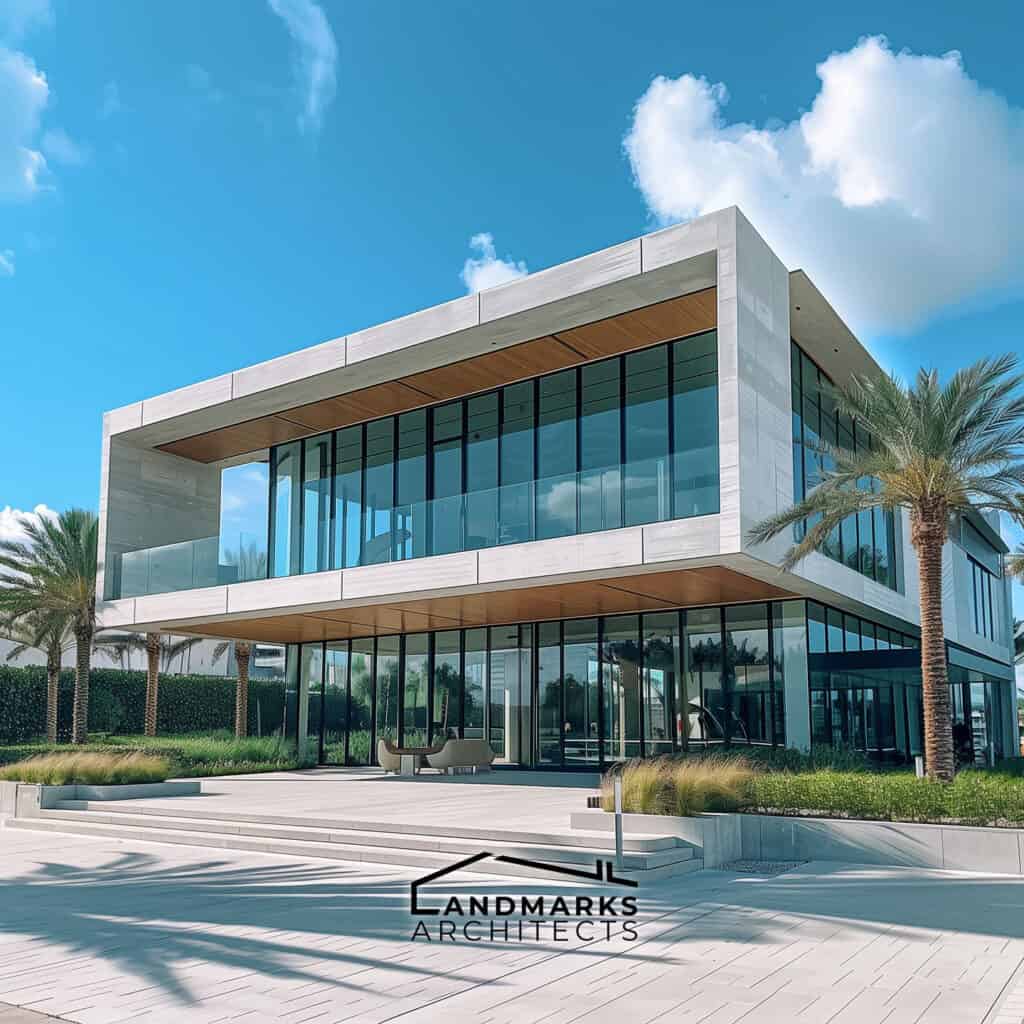
The International Style emerged in Miami as part of the modern movement in architecture. This style is minimal and functional. It emphasizes geometric forms and open spaces.
Key features of the International Style in Miami include:
- Flat roofs and clean lines
- Large windows to maximize natural light
- Open floor plans for flexible living spaces
- Use of natural materials like concrete and glass
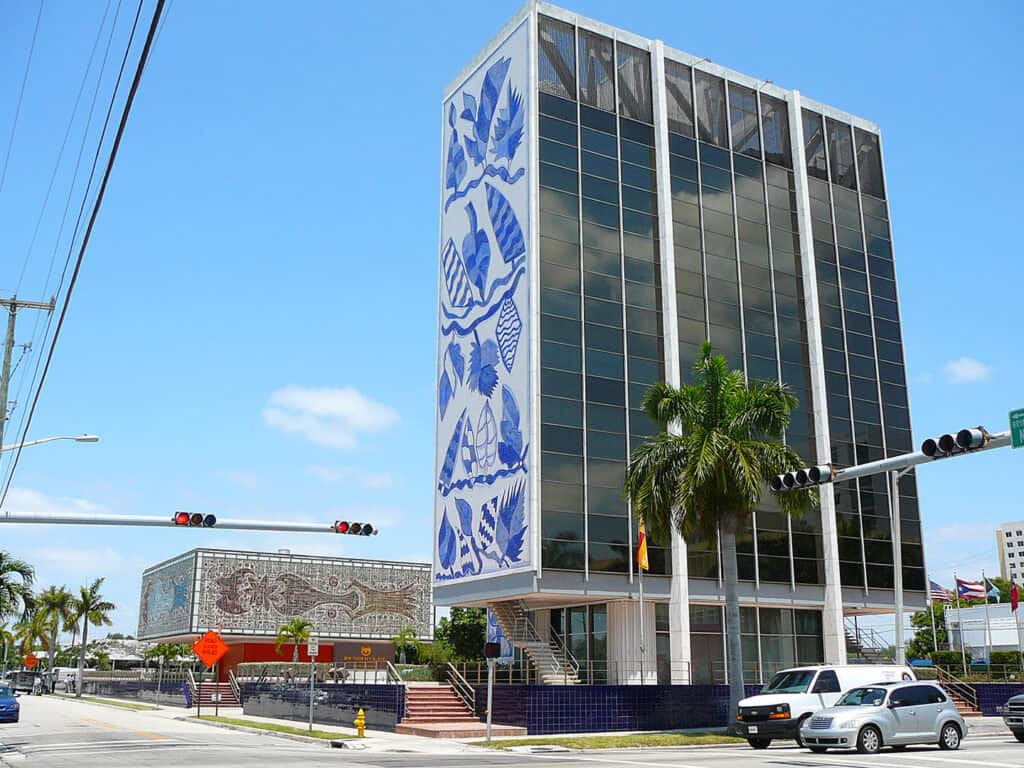
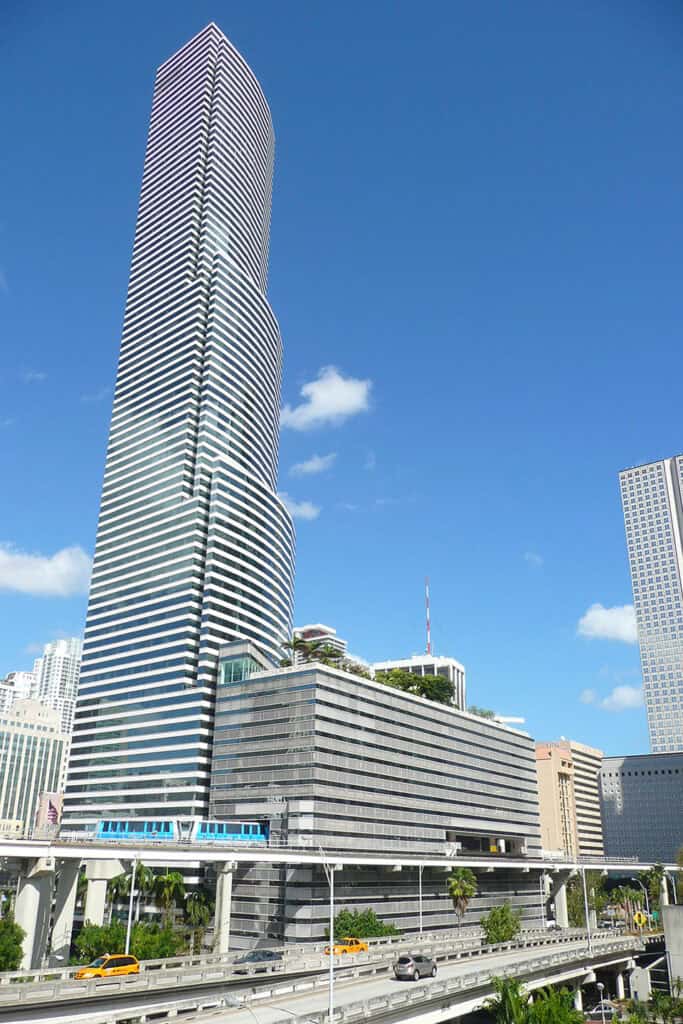
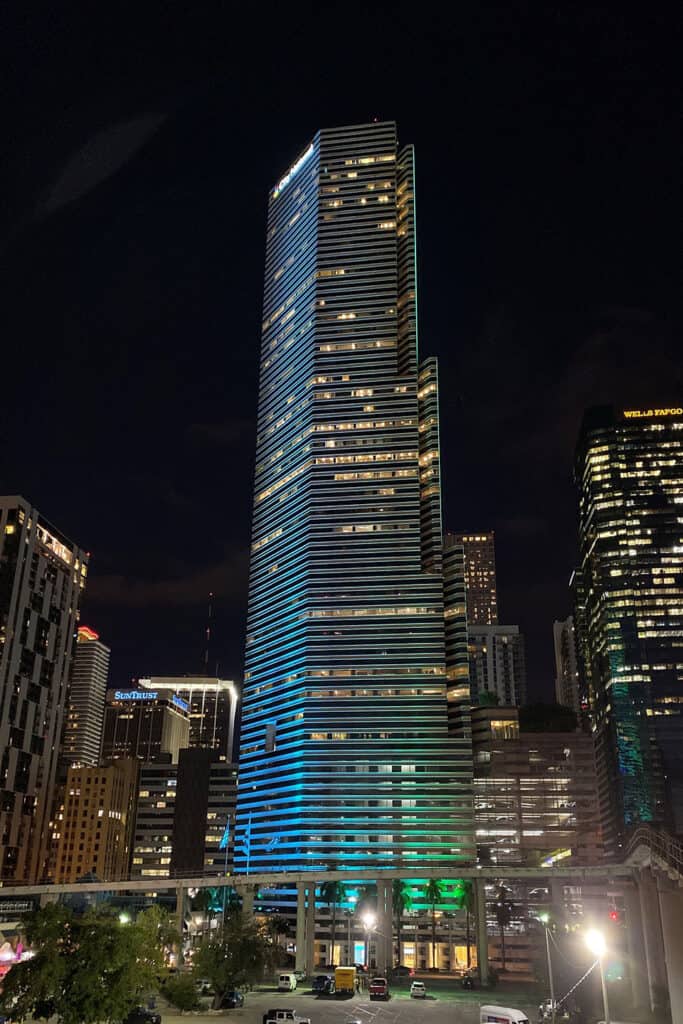
Notable examples of this style in Miami include:
- The Bacardi Building: It shows the International Style. It has a minimalist design, large glass windows, and functional geometric forms.
- The Miami Tower (formerly Bank of America Tower): This 2010 skyscraper has a sleek glass façade and a simple, modernist design. It exemplifies the International Style.
The International Style brings a modern touch to Miami’s skyline with its clean lines and open spaces. It influences new buildings, making the city feel fresh and stylish while still honoring its diverse architectural heritage.
6. Contemporary Designs
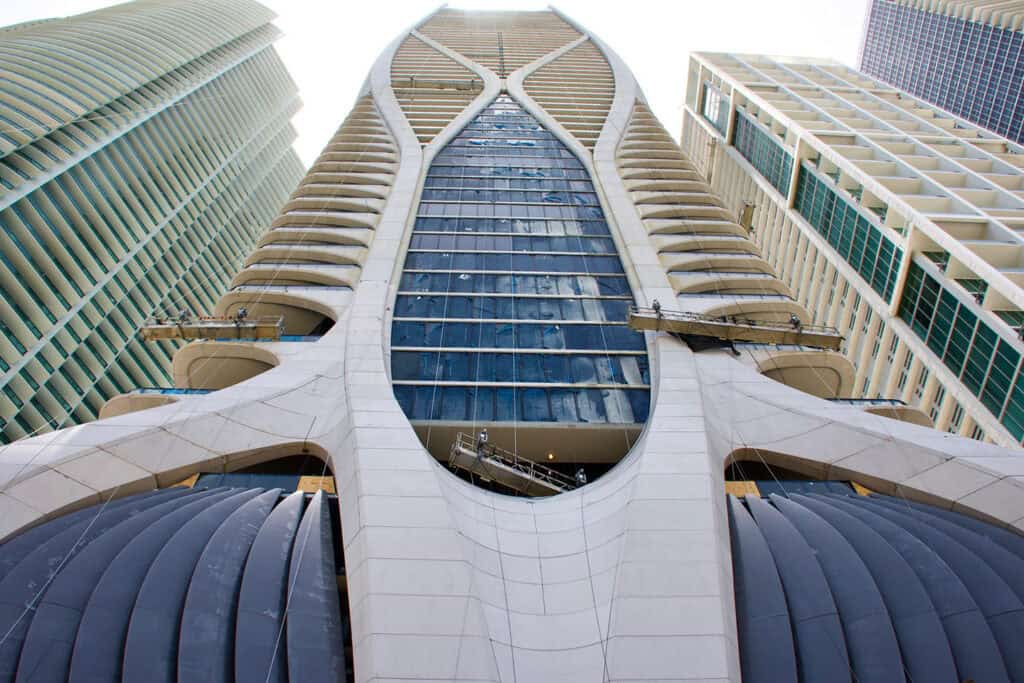
Contemporary architecture in Miami showcases innovative designs that reflect modern needs and aesthetics.
Key features of contemporary designs in Miami:
- Use of natural materials
- Open floor plans for flexibility
- Abundant natural light through large windows
- Green spaces, including hanging gardens
- Integration with the surrounding landscape
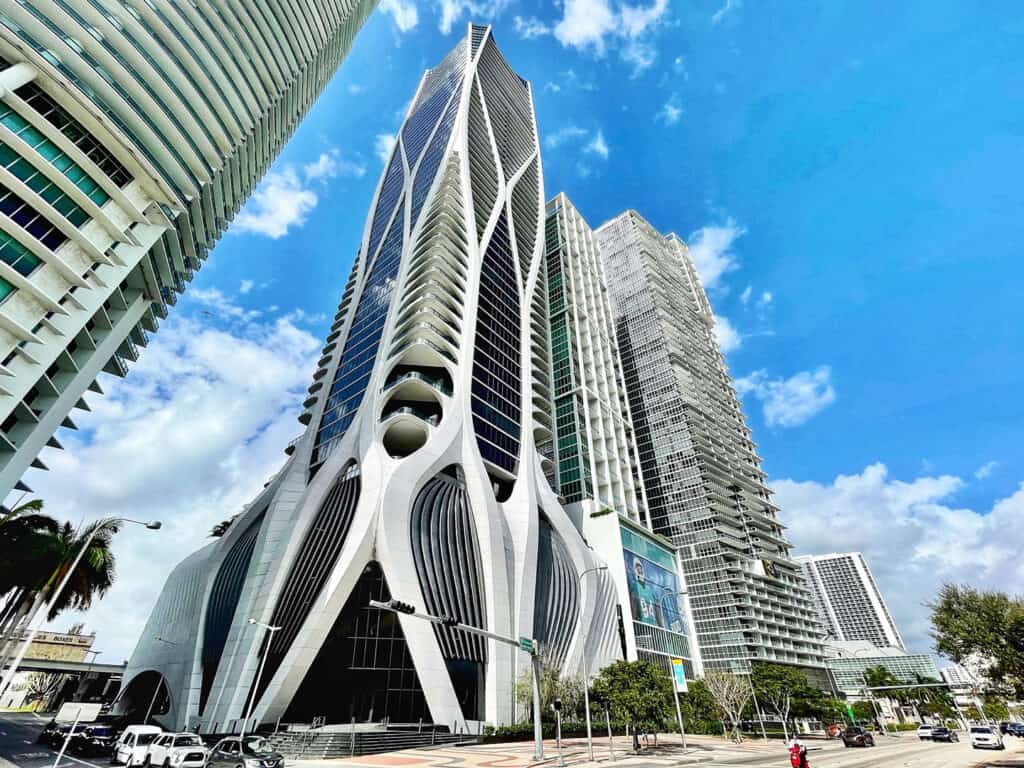
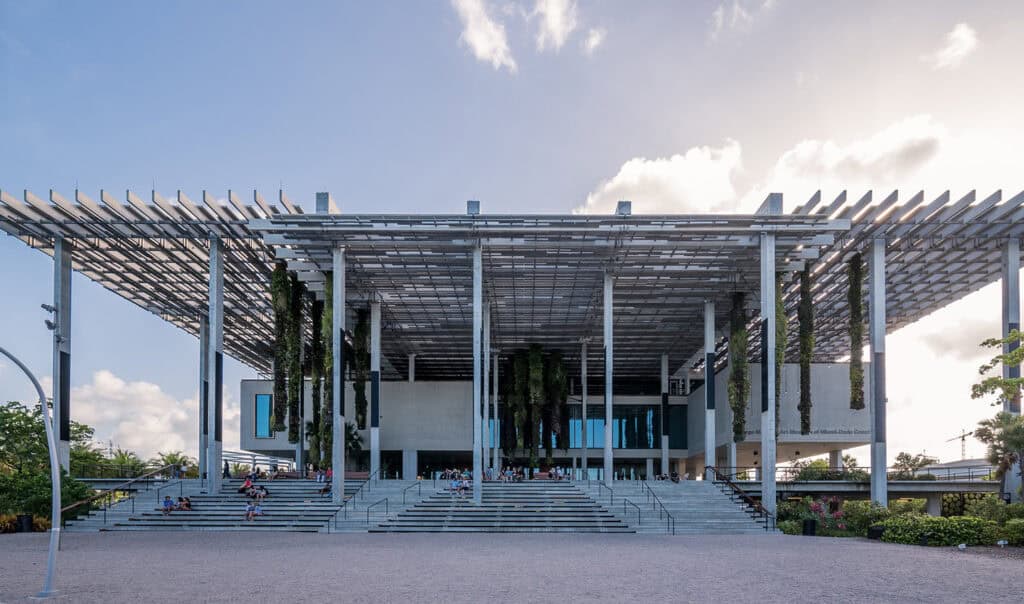
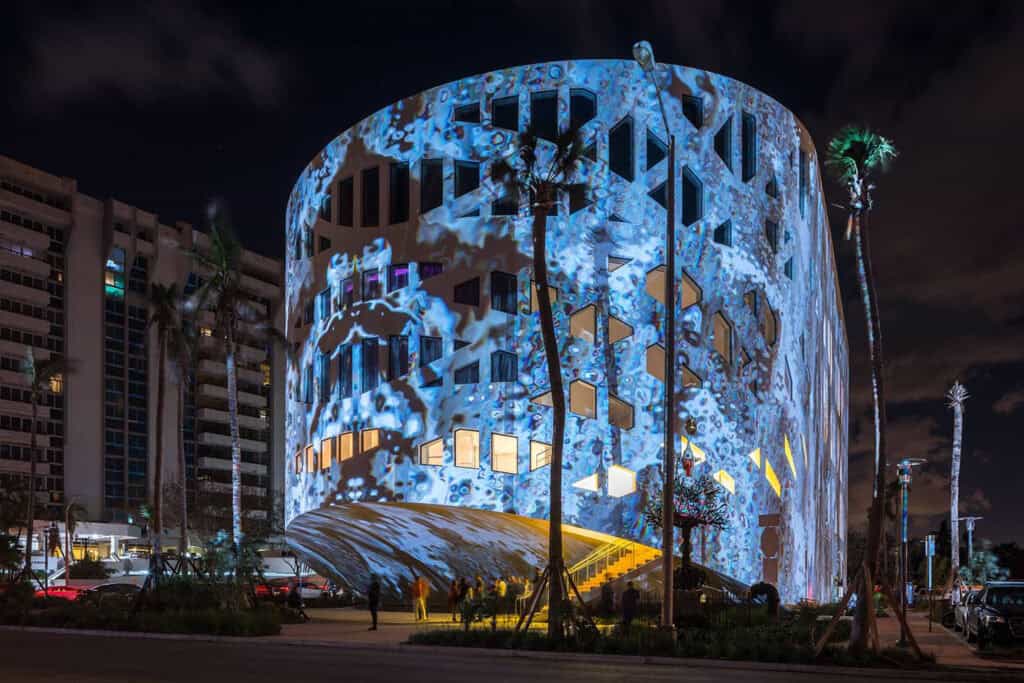
Notable examples:
- One Thousand Museum: Zaha Hadid designed this luxury tower. Its futuristic, curvy design and striking exoskeleton make it one of Miami’s most iconic buildings.
- The Pérez Art Museum Miami: It has contemporary architecture with glass walls, elevated terraces, and vertical gardens. They blend indoor and outdoor spaces.
- The Faena Forum: It blends Modernist architecture with Contemporary design, featuring clean lines, innovative materials, and a strong connection to Miami’s vibrant culture
Contemporary designs focus on sustainability and innovation, making buildings more eco-friendly. They add a modern flair to Miami, making the city feel alive and connected to current trends.
Miami’s Architectural Styles: A Recap
Miami’s architecture features a mix of styles that show off its vibrant culture and history. Neoclassical and Mediterranean Revival bring elegance, while Art Deco and Miami Modern stand out with bold designs.
Contemporary buildings add modern flair, focusing on nature and innovation. By exploring these unique styles, we can better appreciate Miami’s character and find inspiration for our own spaces.
See Aslo What is the Art Deco Style in Architecture? 3 Signature Elements to Know










